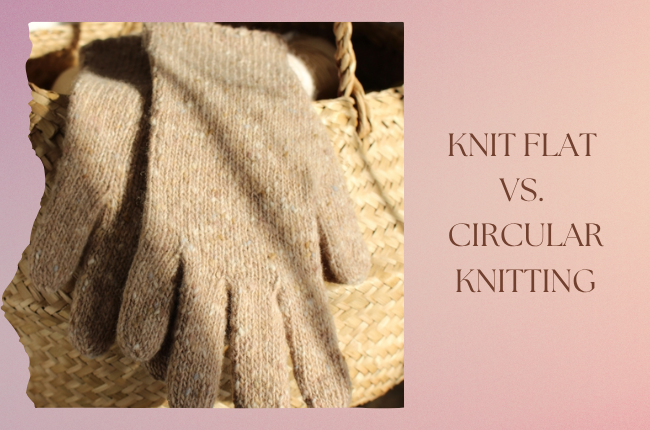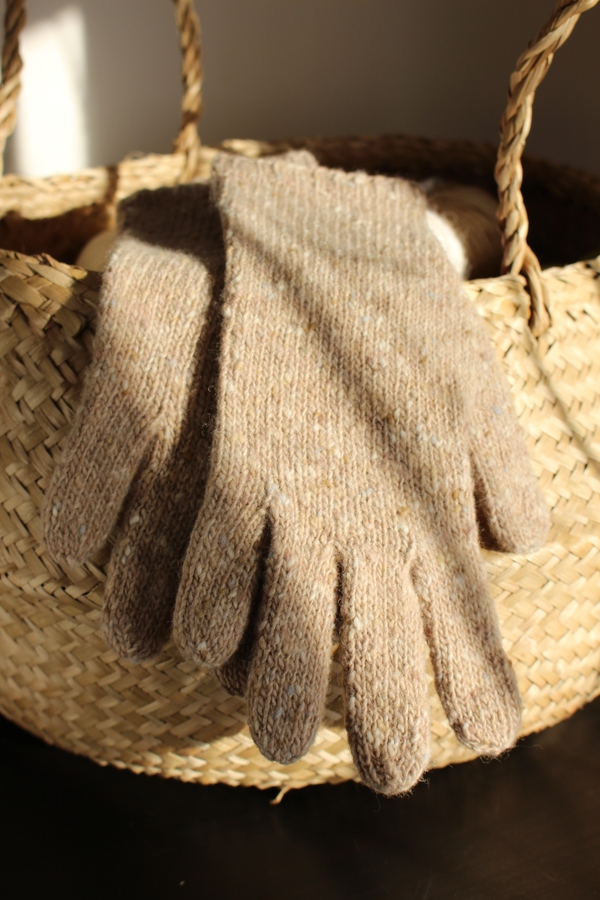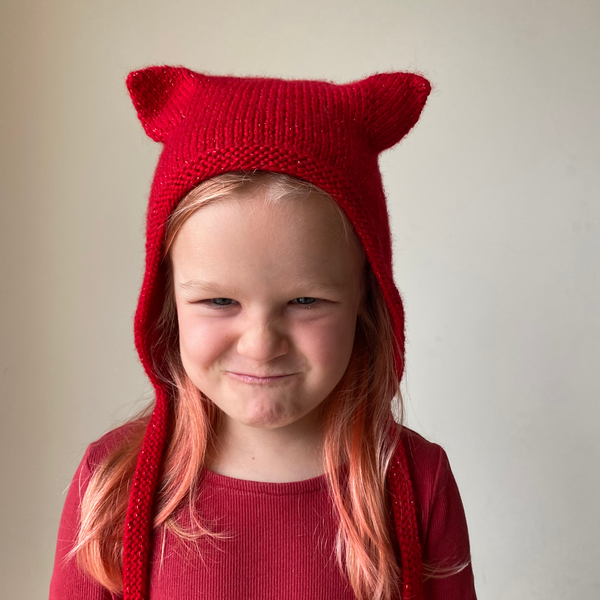Your cart is currently empty!
Knit Flat vs. Circular Knitting: Unraveling the Best Method for Your Next Project

Hello, fellow knitters! Liubov here, from MayLilyKnitting. You know, for every one of us who loves to knit, the big question often comes down to: do I knit flat or do I dive into the wonderful world of circular knitting? It’s a choice that really shapes not just how we work, but also the final huggable friend or cozy garment we create. I’ve spent countless hours with my needles, bringing little creatures to life, and I’m so excited to share my experiences with both these approaches. So, grab your favorite yarn and let’s knit through the ins and outs, helping you master the art of general knitting and achieve seamless success in your own projects!
What Does It Mean to Knit Flat?
When I first learned to knit, like many of us have learned to knit, it was all about knit flat. This means you’re creating a piece of fabric by going back and forth in rows, usually on a trusty pair of straight knitting needles or single pointed needles. You work a row, then you turn your piece, and you work the next row. It’s like a conversation between your two needles! This method is fantastic for making flat items that will later be sewn together, like the front and back of a little sweater for a toy, or a cozy blanket.
Every time you knit your row, you’re either working on the “right side” of your project or the “wrong side,” depending on your stitch pattern. For example, to get that classic smooth stockinette fabric, you’d knit on one side and purl on the other. It’s a very straightforward way to knit, and it’s perfect for those projects where you don’t mind a little seam or two. Plus, managing a large number of stitches for a big shawl or afghan is often much more comfortable on straight needles.
What Does It Mean to Knit in the Round?
Oh, knitting in the round! This is where the magic of seamless creation truly happens. Instead of turning your work, you just keep going, spiraling around and around, creating a beautiful tubular piece of fabric. This means no seams! For me, when I’m knitting little toy bodies or heads, this is often my go-to. You use a circular needle or a set of double pointed needles (DPNs), and the project just grows from itself.
The best part about knitting in the round? You’re always working on the “right side” of your fabric. So, if you’re doing stockinette, it’s just knit stitches all the way around, every single time. This is super handy for items like hats, mittens, or the adorable little sweaters on my toys. It makes the process feel so continuous and flowy, and seeing that seamless fabric emerge truly brings a smile to my face. Plus, no seaming after you knit – what’s not to love about that? I’ve seen some incredible things made on a circular knitting machine, which really highlights the efficiency of this method!

Why Choose Single Pointed Needles for Your Projects?
For many of us, our knitting journey began with single pointed needles. They’re simple, familiar, and honestly, a joy to use for specific projects. When I need to knit a flat piece, like a toy’s ear or a specific appliqué, these are my trusty companions. They’re excellent for getting a feel for your yarn and your stitch, especially if you’re a new knitter or trying out a new stitch pattern.
Choosing single pointed knitting needles is perfect when you need separate pieces that will be assembled later. Think about a toy garment with a distinct front and back, or a small blanket. While you won’t knit seamless items like socks on them, they’re incredibly versatile. If I need a precise stitch count and perfect edges on a piece that needs to lay flat, I often prefer straight needles. They help me focus on the individual rows and ensure every stitch is just right before I even think about joining anything.
Is Seamless Knitting Always the Better Option?
Ah, the dream of seamless! It’s definitely tempting to think that no seam at all is always the best way to go, especially when you’re crafting a super cuddly toy or a comfy sweater. Seamless knitting, often done on a circular needle, truly does create a beautifully clean finish, which I adore for my toy bodies and heads. No bulky joins, just smooth fabric that’s lovely against the skin (or, in my toys’ case, lovely to squish!).
However, I’ve learned that “better” really depends on the project! Sometimes, a little seam can actually provide structure, especially in smaller, intricate pieces. For instance, sometimes I knit flat for a toy’s leg and then seam it up, because it gives a slightly firmer shape than if I tried to knit seamlessly in the round for such a tiny limb. Also, if you’re working a really complex lace or cable stitch pattern, it can actually be easier to manage when you’re alternating between the right and wrong side when knitting, as you do when you knit flat. So, while the thought of a completely seamless garment is wonderful, it’s all about finding the needle type that works best for what you’re trying to create and the unique qualities of your yarn.

When Should You Knit Flat vs. Circular?
This is where the fun decision-making comes in for every knitter! For me, the choice between whether to knit flat vs circular often comes down to the shape of the toy I’m making. If I’m creating a garment like a doll’s sweater with distinct front and back pieces, I’ll often knit flat. It gives me precise control over shaping the armholes and neckline. And for simple flat items like scarves, dishcloths, or even little blankets for toy beds, flat knitting is definitely the way to go. You can easily manage a large number of stitches on straight needles without tangling cables.
But if I’m making a tubular part of a toy – like the body of a little bear, a tiny hat, or a leg that needs to be perfectly round – circular knitting is my absolute favorite. It just makes sense! When you knit a hat or a small sweater body, eliminating that seam is a game-changer for a smooth, professional finish. Using a circular needle or DPNs means continuous knitting in the round, and honestly, it often feels quicker because you’re not constantly turning your work. So, it truly boils down to the final shape you envision and whether you want a seamless result or prefer the control of constructing separate pieces.
Knit Flat vs. Knitting in the Round for Toy Making: A Quick Comparison
To make it super easy to decide which method to use for your next adorable creation, here’s a little table comparing knit flat and circular knitting specifically for toy making, based on my own experience:
| Feature | Knit Flat (using single pointed needles or straight needles) | Circular Knitting (using circular needle or DPNs) |
|---|---|---|
| Best For | Flat pieces (ears, snouts, clothing panels), intricate flat stitch patterns, traditional toy garments, smaller toy parts that need to be seamed. | Tubular shapes (toy bodies, arms, legs), seamless items like toy hats, anything where a seam would be bulky or visible. |
| Seams | Yes, requires seaming after you knit. | No seams (truly seamless!), making finishing quicker. |
| Working Side | Alternates between right and wrong side when knitting each row. | Always working on the right side of the fabric when knitting in the round. |
| Ease for Beginner | Often easier to learn basic knit and purl stitches. | Can be tricky to manage DPNs or the magic loop initially, but incredibly rewarding. |
| Toy Example | A flat-knit toy blanket, a toy’s flat ear or snout, a traditional sweater for a doll that’s seamed up the sides. | A seamless toy body, a tiny knitted hat for a teddy bear, seamless toy items like socks for a doll. |
| Comfort | Can be less comfortable on very large items due to bulk. | Generally more comfortable for continuous knitting, no bulk of seams on the project itself. |
Can You Convert Flat Patterns to Circular Knitting?
Oh, absolutely! This is one of those little secrets that opens up a world of possibilities for an experienced knitter. You can often take a pattern that’s written to knit flat and adapt it for circular knitting. The main thing to remember is that when you’re working in the round, you’re always on the “right side” of your fabric. So, any row in the original pattern that tells you to purl on the “wrong side” to create a specific effect (like stockinette), you’d simply knit that row instead when knitting in the round.
It does get a little trickier with more complex stitch patterns, like intricate cables or lace, that are specifically designed with the back-and-forth flat knitting motion in mind. You also need to think about seam allowances – when you knit flat, patterns usually account for a bit extra for seaming, which you won’t need for a seamless project. But honestly, with a bit of practice and a good understanding of how stitches behave, converting patterns is incredibly rewarding. It means you can turn almost any knit flat garment pattern into a seamless one, which is just pure joy!

What Are the Best Needles for Circular Knitting?
When it comes to circular knitting, there’s a whole wonderful range of knitting needles to explore! The two main types are fixed circular needles and interchangeable circular needle sets. Fixed circular needles are great – they have a specific needle size permanently attached to a specific cable length. I have a few trusty fixed circulars that I always grab for my most common toy projects, especially if I know the exact size I need. They’re reliable and straightforward.
But if you’re looking for ultimate versatility, interchangeable circular needles are a dream! These sets allow you to screw different sized needle tips onto various lengths of cables. This means you can create endless combinations, making them an incredibly versatile knitting needle for anything from a tiny toy hat to a huge sweater. And then there are double pointed needles (or DPNs), those little sets of five needles that are perfect for very small circumferences, like toy fingers or the very top of a tiny hat before you switch to a circular needle. And let’s not forget the magic loop method, which uses one long circular needle to knit seamless items like socks and other small circular pieces – a personal favorite of many knitters, including myself!
How Does Yarn Choice Impact Your Knitting Method?
Oh, yarn! It’s not just about the color, right? The type of yarn you choose can really influence whether you’ll prefer straight knitting needles or circular ones, and how your project will turn out. For my toys, I often choose a smooth, sturdy yarn because it makes the stitches crisp and clear, whether I knit flat or in the round. A very fluffy yarn, on the other hand, might be more forgiving of a slight wobble in tension, and a small seam might even disappear into the fluff!
Also, consider the elasticity of your yarn. Some yarns, especially those with no give, can be a bit trickier to work with on DPNs because they might slip off easily. In those cases, the magic loop method with a circular needle might be a smoother experience. The weight of your yarn is important too; a bulky yarn will work up incredibly fast on either circular knitting needles or perhaps some nice straight single pointed ones, creating a cozy garment quickly. But for delicate projects with fine yarn, you might find one method offers more control over the drape and overall look of your knitted piece. Your yarn choice definitely guides your knitting style and the needle type you instinctively reach for.
What Are the Common Challenges of Each Knitting Style?
Okay, let’s be honest, every knitting method has its little quirks! When I knit flat, the biggest challenge can be the seam. Getting those seams perfectly invisible and neat so they don’t detract from your adorable toy or garment takes practice. Plus, constantly turning your work means you’re always flipping between the right side and the wrong side when knitting, which can sometimes be a bit confusing, especially with complicated stitch patterns. And let’s face it, managing a huge number of stitches for large items like a sweater back on straight needles can get a little cumbersome!
Circular knitting has its own unique puzzles. For tiny bits, working with DPNs can feel like wrestling with a handful of chopsticks, and sometimes you get those dreaded “ladders” between needles if your tension isn’t just right. The magic loop method, while amazing, has a bit of a learning curve too, especially getting that cable just right. And because you’re always working in the round, there’s no distinct end to a row to mark your place, which can make fixing mistakes a bit trickier. But trust me, with a little patience and a lot of happy knitting, these challenges become second nature. You’ll be whipping up seamless creations in no time!
Where Can You Find More Help and Community Support?
One of the most beautiful things about general knitting is the incredible community! We’ve all been at that point in our knitting journey where a stitch just isn’t making sense, or a pattern seems like hieroglyphs. Don’t ever feel shy about reaching out! If you’re struggling with whether to knit flat or in the round, or any other knitting conundrum, there are so many wonderful resources. The KnittingHelp forum community is absolutely brilliant – I’ve found so many answers there, whether it’s about a tricky circular needle technique or getting a perfect seam on a knit flat project.
Beyond forums, YouTube is a treasure trove of video tutorials that visually walk you through just about anything, from casting on with straight single pointed needles to mastering the magic loop to knit seamless items like socks. And don’t forget your local yarn store! They often have fantastic knitting groups where you can get hands-on help, share tips, and just enjoy some lovely company. Whether you prefer straight needles or those versatile circular ones, there’s always someone happy to share their passion and help you knit your next masterpiece.
Key Takeaways for Your Next Knitting Project:
- Knit flat means back-and-forth knitting on straight needles, often requiring seams for assembly.
- Circular knitting creates seamless, tubular fabric by continuously working in the round on a circular needle or DPNs.
- Single pointed needles are wonderful for beginners and for flat components of a garment or toy.
- Seamless results from circular knitting are fantastic for comfort and a clean finish, especially for items like hats or toy bodies.
- Choose between knit flat and circular knitting based on your project’s desired shape, complexity, and personal preference.
- Most knit flat patterns can be adapted for circular knitting, requiring adjustments for the “wrong side” rows.
- Circular knitting needles are considered incredibly versatile; explore fixed circulars for specific projects or interchangeable circular sets for flexibility.
- Your yarn choice impacts drape and stitch definition, influencing which knitting method might be best suited.
- Both methods have learning curves: perfecting seams in flat knitting, or managing DPNs and magic loop in circular knitting.
- The general knitting community, including resources like the KnittingHelp forum community, is an amazing place for support and inspiration!
Leave a Reply